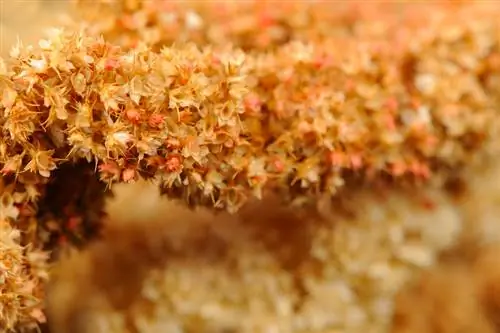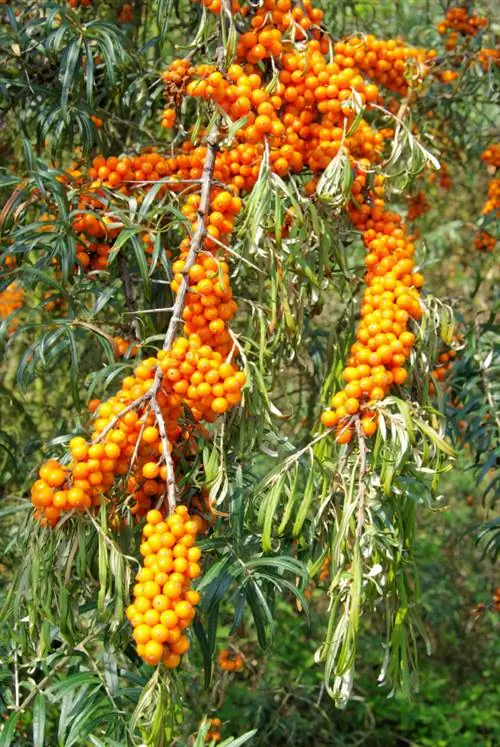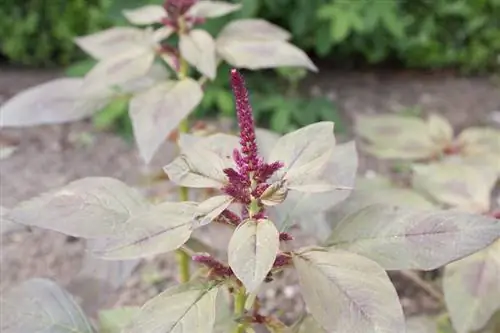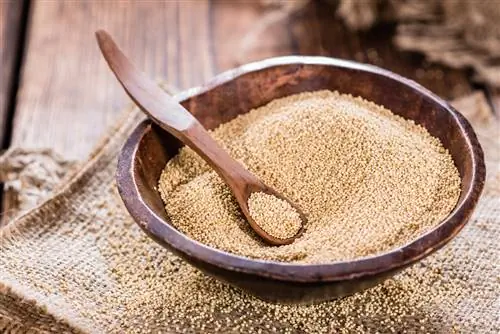- Author admin [email protected].
- Public 2023-12-16 16:46.
- Last modified 2025-01-23 11:20.
It is also called foxtail and came to our latitudes from South America. As a nutritious pseudo-grain, it is popular in whole food cuisine and tastes good in many preparation variations. How do you harvest it?
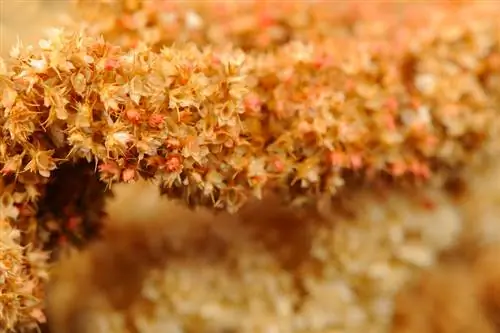
How do you harvest amaranth correctly?
You can harvest amaranth by cutting off the dried fruit stalks as soon as the grains rustle when shaken and are no longer glassy. Ideally, harvest between early September and mid-October, after a period of dry weather.
Recognizing harvest readiness: signs
The foxtail fruit heads are ready to harvest when they are dried and the grains they contain rustle when shaken. It is best to examine individual grains. Are the grains still glassy? Then they are not really ripe yet.
Usually ready for harvest in September
Depending on when you sown your amaranth and it starts flowering (between July and September), the correct harvest time varies between the beginning of September and mid-October. In cool regions the grains often do not fully ripen. Therefore, you should generally only grow amaranth in warm regions.
Do not harvest after rain
In general, you should never harvest amaranth if it has rained just a few days before. It should be dry. Otherwise you will have difficulties with harvesting and drying later. Rot or mold can also occur more quickly.
How do you harvest amaranth?
If you have only grown a few plants for your own use, you do not need special machines to harvest amaranth. Then it is sufficient to cut off the fully ripe fruit stalks. However, if you have grown more than one hectare of amaranth, you may need a combine to harvest it. There are special machines here that are designed for harvesting amaranth.
How high are the returns?
In today's industry, yields of up to 1,200 kg per hectare of land are possible (amaranth grains). But usually only around 700 kg are harvested per hectare. In addition to the grains, individual leaves can also be harvested at an earlier stage. They can be prepared like spinach.
Dry, clean and store after harvest
This is what happens after the harvest for your own use:
- Hang up the fruit heads or place them in a cloth bag
- let dry
- threshing or beating out the ears of grain
- clean
- Storage: in paper bags, cloth sacks or in wooden boxes
Tip
Caution: Amarath tends to spread like a weed if it is harvested too late!

